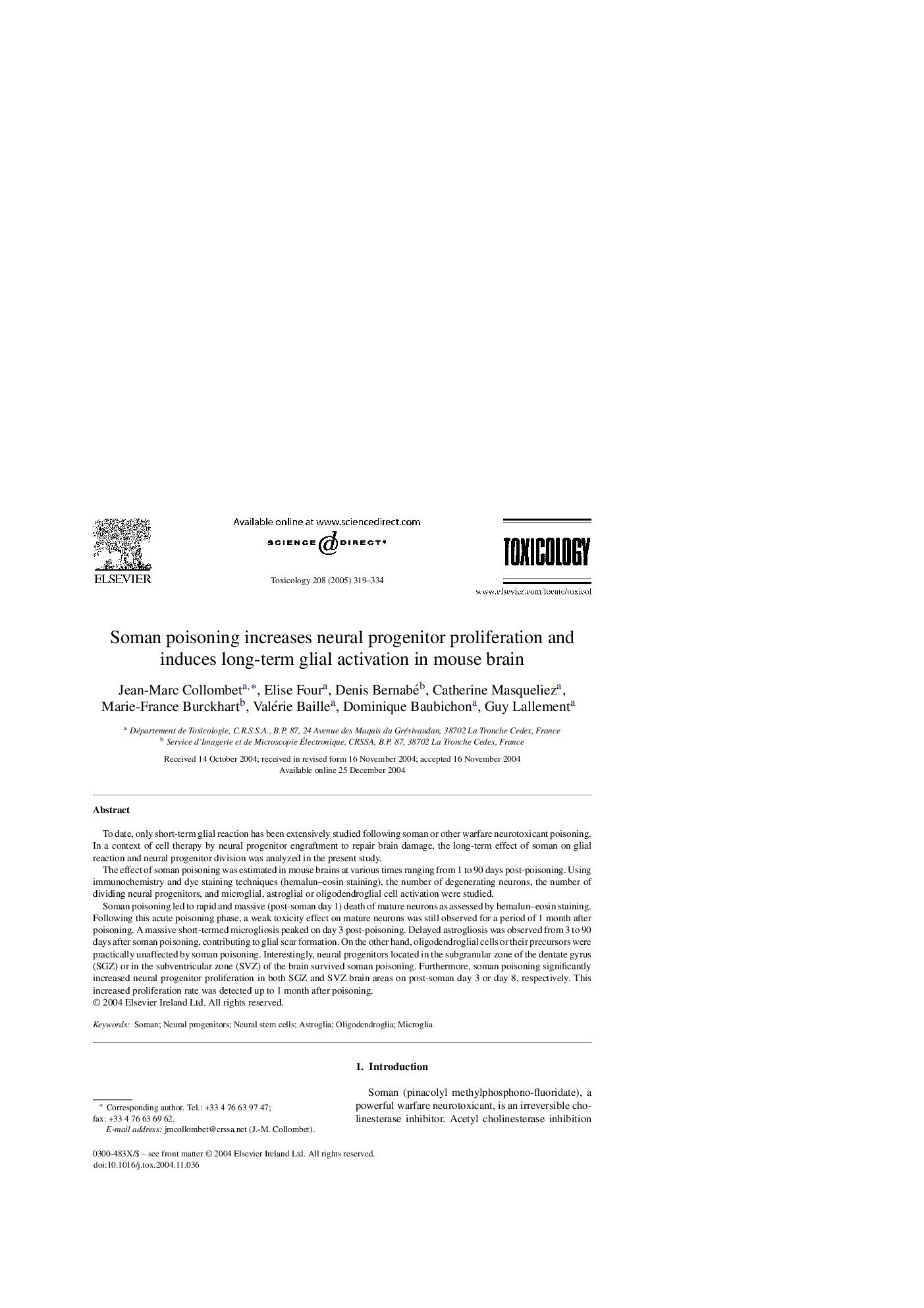| Article ID | Journal | Published Year | Pages | File Type |
|---|---|---|---|---|
| 9034653 | Toxicology | 2005 | 16 Pages |
Abstract
Soman poisoning led to rapid and massive (post-soman day 1) death of mature neurons as assessed by hemalun-eosin staining. Following this acute poisoning phase, a weak toxicity effect on mature neurons was still observed for a period of 1 month after poisoning. A massive short-termed microgliosis peaked on day 3 post-poisoning. Delayed astrogliosis was observed from 3 to 90 days after soman poisoning, contributing to glial scar formation. On the other hand, oligodendroglial cells or their precursors were practically unaffected by soman poisoning. Interestingly, neural progenitors located in the subgranular zone of the dentate gyrus (SGZ) or in the subventricular zone (SVZ) of the brain survived soman poisoning. Furthermore, soman poisoning significantly increased neural progenitor proliferation in both SGZ and SVZ brain areas on post-soman day 3 or day 8, respectively. This increased proliferation rate was detected up to 1 month after poisoning.
Related Topics
Life Sciences
Environmental Science
Health, Toxicology and Mutagenesis
Authors
Jean-Marc Collombet, Elise Four, Denis Bernabé, Catherine Masqueliez, Marie-France Burckhart, Valérie Baille, Dominique Baubichon, Guy Lallement,
